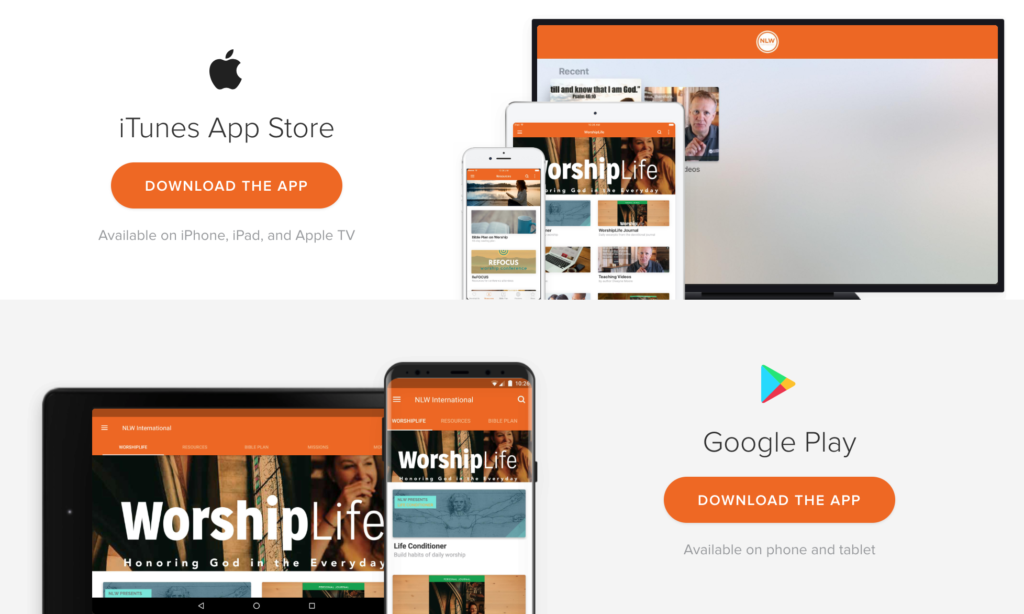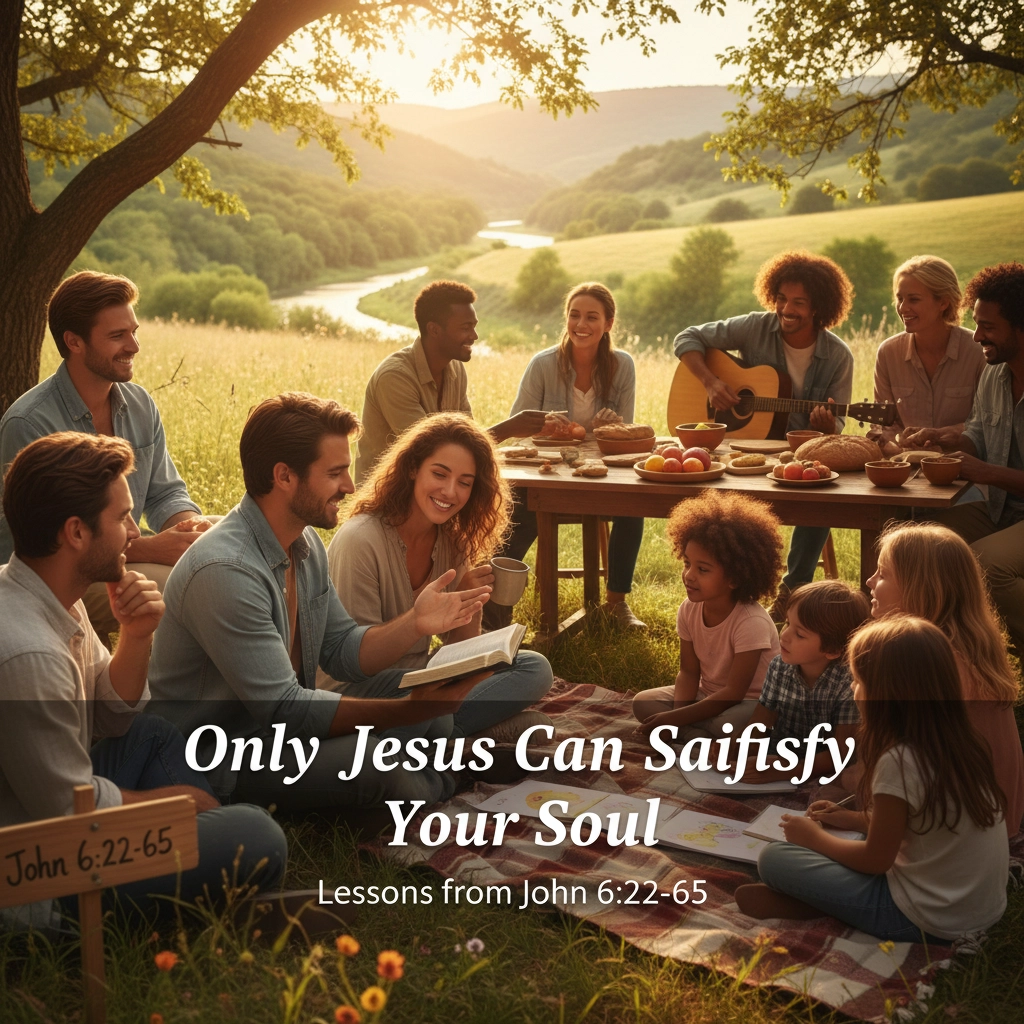
What Prayer Is and Isn’t
By Dwayne Moore
I want you to think back to the first time you prayed. Do you remember it? Perhaps your first prayer was when you prayed to trust Christ as your Savior, or maybe it was when you were in trouble about something and you uttered a prayer. It could be that your first time to pray was with a group at your school or at church when you were growing up. Or maybe, you were like me, just a wee child when you first tried talking with God.
One day when I was around 4 years of age I misplaced my favorite blanket and couldn’t find it anywhere in the house. I didn’t want to admit to my mom that I’d lost it because I was afraid she might get upset at me. So, the only thing I knew to do was pray. I don’t recall exactly what I said in my first praying adventure, but I do vividly recall the image that immediately popped into my head when I prayed. In my mind I could clearly see where my blue blanket was hiding. So I went to the place I believed it was, and sure enough, it was there, inside the clothes hamper, right where I had imagined it to be.
Mere coincidence, you say? I don’t think so, for in that moment a little seed of faith planted itself deep inside my tender heart. That was my first encounter with the living God, and he came through for me and answered my simple but important to a 4-year-old request!
What a privilege we have to pray! In fact, I can’t imagine life without prayer, can you? Matthew Henry said, “You may as soon find a living man that does not breathe, as a living Christian that does not pray.”1 Almost everyone prays at some time to someone—even people who aren’t followers of Jesus. Surveys indicate that one in five unbelievers prays every day.2
Prayer is a part of every major world religion. It’s one of the most ancient expressions of worship. In Islam, the call of the muezzin summons faithful Muslims to kneel in the direction of Mecca and pray to Allah with their heads to the floor. Buddhists have a form of prayer that focuses on entering a state of cognitive tranquility.3 Ancient Romans began their prayers with an invocation to the divinity. They had to be sure, though, that they didn’t address the wrong god. So, to avoid this error they had litanies of prayers for fifteen different gods and goddesses!4
Christians pray too, but the major difference is that we pray to the Deity who’s alive! Unlike other religions, we can communicate and commune with the one, true God. Anyone can attempt to pray, but unless someone is on the other end of our prayer listening and responding back to us, then we’re not really praying. If you search online, you’ll discover several places where prayer is defined as “talking to God.” But that’s not quite accurate with Christ-followers. It’s more correct to say we talk with God. It’s a conversation. As Max Lucado explains it, “We speak. He listens. He speaks. We listen. This is prayer in its purest form.”5
Center of the Sermon
The Lord’s Prayer is right in the middle of the Sermon on the Mount. Not only is it centrally located in the passage, its meaning is also at the heart of Jesus’ teaching. Everything about his sermon seems to emanate from the Model Prayer…
- Jesus said in Matthew 6 we are to “Seek first the kingdom of God” (verse 33). Before he spoke those words, he’d already sought the Father in the Lord’s Prayer.
- In chapter 7 he told us to ask, seek and knock in prayer (verse 7). He set the example for making requests of God when he asked for daily bread and other provisions during the Model Prayer.
- Toward the close of his sermon, Jesus said to be careful of “wolves in sheep’s clothing” (7:15). Moments before in his Model Prayer, Jesus prayed for protection from the evil one.
- Near the beginning of his teaching, the Lord said we’re to be salt and light on the earth. In the Model Prayer he prayed for God’s kingdom to come to this earth, which is exactly what being salt and light helps to accomplish.
What Prayer Is Not
Before Jesus demonstrated to his disciples how we should pray, he first warned of some things we shouldn’t do. Matthew 6 starts with instructions from the Lord that are clear and to the point: “Beware of practicing your righteousness before other people in order to be seen by them, for then you will have no reward from your Father who is in heaven” (ESV).
He went on to say that we shouldn’t pray “like the hypocrites who love to pray publicly on street corners and in the synagogues where everyone can see them” (verse 5 NLT). Furthermore, we shouldn’t “babble on and on as people of other religions do. They think their prayers are answered merely by repeating their words again and again” (verse 7 NLT). Prayers that honor God don’t need to be showy and they don’t need to be lengthy repetitions. God already knows our thoughts and sees our needs.
What Prayer Should Be
Humble.
E.M. Bounds wrote, “As a ship is made for the sea, so prayer is made for humility, and so humility is made for prayer.”6 Humility in prayer is vital because “God opposes the proud but favors the humble” (1 Peter 5:5b NLT).
In the Sermon on the Mount Jesus told his disciples, “But when you pray, go away by yourself, shut the door behind you, and pray to your Father in private” (Matthew 6:6a NLT). Jesus knew that only people who are serious about prayer would hide themselves away where no one could see them or pat them on the back for praying. Jesus basically drew a line in the sand. He separated those who truly want to pray to God from those who may have ulterior motives for their prayers.
Simple.
It’s been said, “Good things come in small packages,” and nothing could be truer of the Model Prayer. It’s only a little over 60 words long; and yet, it sets the standard for all the prayers in God’s Word and all prayers of the Christian faith.
The verses that encompass the Lord’s Prayer have to be some of the most shocking scriptures in the entire Bible. I mean, think about it: Can you imagine sitting there around Jesus’ feet that day, listening to him teach on prayer? The moment you hear him say, “Pray like this,” what would cross your mind? I’d be thinking, “OK, here we go. This is going to be a long and profound prayer. It’s the King of kings, the Master Messiah himself, and he’s showing us how to pray. So, yea, this is gonna take a while.” Then he starts to pray, and in like 20 seconds he’s done. I’d be thinking, “Whoa, whoa, was that it? That was way more simple than I was expecting!”
Jesus said we don’t have to pray with vain babblings and long repetitions, and he modeled what he taught with this simple, short and thorough expression of prayer.
Relational.
The fact that God already knows our needs before we ask shouldn’t discourage us from praying. It would only demotivate us if asking were our primary reason for praying. Could it be that Jesus doesn’t want us to make requesting things of him the biggest goal for our prayers? There’s certainly more to prayer than what we can get.
The very first words of the Lord’s Prayer are “Our Father.” Perhaps the most important purpose of prayer is to connect with our Father in heaven…
Dr. Adrian Rogers saw prayer as something God initiates in order to commune with us and include us with his divine plan. Dr. Rogers believed the more time we invest in prayer, the more God’s desires will become our desires. He explained it like this: “The prayer that gets to heaven is the prayer that starts in heaven. We close the circuit. That’s all we do…Prayer is the Holy Spirit finding a desire in the heart of the Father, putting that desire into our heart and then sending it back to heaven in the power of the cross.”7
Powerful.
Who would think that an acorn the size of a marble could produce a 100-foot tall oak tree? Or, who could imagine the power contained in a paperclip? If turned into pure energy, the atoms in one small paper clip could yield 18,000 tons of TNT explosives!8
In the same way, who on this earth could fathom the potential power the Lord has made available to us through prayer? The truth is, it’s not the words of our prayers that are powerful; it’s the God to whom we pray, whose power is beyond all comprehension.

This app is packed with powerful content and resources to help you grow and stay connected with our NLW community. Check out via Google Play or the App store!




Leave a Reply
You must be logged in to post a comment.